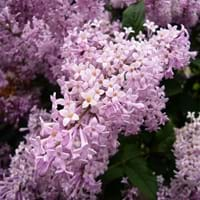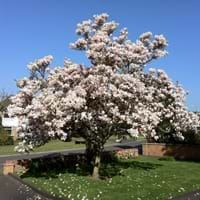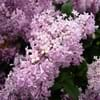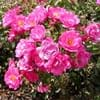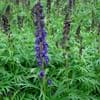Life Span
Perennial
Perennial
Type
Flowering Plants, Shrubs
Tree
Origin
Europe, Northern America
Not Available
Types
Persian lilac, Dwarf Korean lilac, Tree lilacs, Chinese lilac, Himalayan lilac
Gwillimia, Manglietia, Kmeria
Habitat
Roadsides, Rocky areas, Thickets
Subtropical climates, Tropical regions
USDA Hardiness Zone
3-7
6-9
Sunset Zone
A1, A2, A3, 1a, 1b, 2a, 2b, 3a, 3b, 4, 5, 6, 7, 8, 9, 10, 11, 14
Not Available
Habit
Upright/Erect
Oval or Rounded
Flower Color
Blue, Pink, Purple, Red, White, Yellow
Purple, Pink, Light Pink, Rose
Flower Color Modifier
Not Available
Bicolor
Leaf Color in Spring
Dark Green
Green
Leaf Color in Summer
Green
Green
Leaf Color in Fall
Green, Lemon yellow, Sandy Brown
Green, Yellow green, Sandy Brown
Leaf Color in Winter
Not Available
Not Available
Leaf Shape
Heart-shaped
Ovate
Plant Season
Spring
Spring, Summer
Sunlight
Full Sun, Partial shade
Full Sun, Partial Sun
Growth Rate
Medium
Medium
Type of Soil
Loamy, Sandy
Clay, Loam, Sand
The pH of Soil
Acidic, Alkaline, Neutral
Acidic, Neutral
Soil Drainage
Well drained
Well drained
Bloom Time
Spring
Spring, Late Spring
Tolerances
Not Available
Not Available
Where to Plant?
Ground, Pot
Ground
How to Plant?
Grafting, Seedlings, Stem Planting, Transplanting
Seedlings, Transplanting
Plant Maintenance
Medium
Medium
Watering Requirements
Keep the ground moist but not water-logged, Over-watering can cause leaf problems or root diseases, Prefer drip-irrigation instead of Over-head watering, Requires a lot of watering, Water twice a day in the initial period, Water when soil is dry
Prefer drip-irrigation instead of Over-head watering
In Summer
Lots of watering
Lots of watering
In Spring
Moderate
Moderate
In Winter
Average Water
Average Water
Soil pH
Acidic, Alkaline, Neutral
Acidic, Neutral
Soil Type
Loamy, Sandy
Clay, Loam, Sand
Soil Drainage Capacity
Well drained
Well drained
Sun Exposure
Full Sun, Partial shade
Full Sun, Partial Sun
Pruning
Prune after flowering, Prune prior to new growth, Remove dead leaves, Remove dead or diseased plant parts
Prune if you want to improve plant shape
Fertilizers
All-Purpose Liquid Fertilizer
Fertilize in late fall, fertilize in spring, Requires high amount of nitrogen
Pests and Diseases
Powdery mildew, Slugs, Snails
Aphids, Bacterial Blight, Canker, Crown gall, Hoplia beetle, Leaf burn, Leaf spot, Mealybugs, Powdery mildew, Red blotch, Scorch, Soft scales, Thripes, Wetwood
Plant Tolerance
Drought
Not Available
Flower Petal Number
Double
Single
Foliage Texture
Medium
Coarse
Foliage Sheen
Matte
Matte
Attracts
Butterflies, Hummingbirds
Not Available
Allergy
Eye irritation, Itchy eyes, Runny nose
Not Available
Aesthetic Uses
Beautification, Bouquets, Showy Purposes, Used for decorating walls, fences, gates, hedges, etc.
Showy Purposes
Beauty Benefits
Not Available
Treatment of Dark Spots
Environmental Uses
Air purification
Air purification
Medicinal Uses
Fever, Treat Parasitic Intestinal Worms
Alzheimer’s Disease, Anxiety, Cancer, Digestion problems, Liver problems, Menstrual Cramps, Respiratory Disorders, Weight loss
Part of Plant Used
Flowers
Whole plant
Other Uses
Air freshner, Oil is used for aromatherapy, Oil is used in perfume, soaps, creams, etc., Used As Food, Used as Ornamental plant, Used for fragrance
Used as Ornamental plant, Used for its medicinal properties
Used As Indoor Plant
Yes
Yes
Used As Outdoor Plant
Yes
Yes
Garden Design
Cutflower, Edging, Mixed Border, Topiary / Bonsai / Espalier
Feature Plant, Foundation, Shade Trees
Botanical Name
Syringa
MAGNOLIA 'Alexandria'
Common Name
Lilac
Alexandria Magnolia, Magnolia
In German
Flieder
Magnolienbaum
In Spanish
lila
árbol de magnolia
In Greek
πασχαλιά
Magnolia δέντρο
In Portuguese
lilás
magnólia
In Polish
liliowy
magnolia drzewa
In Latin
lilac
Magnolia lignum
Phylum
Magnoliophyta
Magnoliophyta
Class
Magnoliopsida
Magnoliopsida
Order
Lamiales
Magnoliales
Family
Oleaceae
Magnoliaceae
Clade
Angiosperms, Asterids, Eudicots
Angiosperms, Magnoliids
Tribe
Oleeae
Not Available
Subfamily
Not Available
Not Available
Importance of Lilacs and Magnolia Tree
Want to have the most appropriate plant for your garden? You might want to know the importance of Lilacs and Magnolia Tree. Basically, these two plants vary in many aspects. Compare Lilacs and Magnolia Tree as they differ in many characteristics such as their life, care, benefits, facts, etc. Every gardener must at least have the slightest clue about the plants he wants to plant in his garden. Compare their benefits, which differ in many ways like facts and uses. The medicinal use of Lilacs is Fever and Treat Parasitic Intestinal Worms whereas of Magnolia Tree is Alzheimer’s Disease, Anxiety, Cancer, Digestion problems, Liver problems, Menstrual Cramps, Respiratory Disorders and Weight loss. Lilacs has beauty benefits as follows: Not Available while Magnolia Tree has beauty benefits as follows: Not Available.
Compare Facts of Lilacs vs Magnolia Tree
How to choose the best garden plant for your garden depending upon its facts? Here garden plant comparison will help you to solve this query. Compare the facts of Lilacs vs Magnolia Tree and know which one to choose. As garden plants have benefits and other uses, allergy is also a major drawback of plants for some people. Allergic reactions of Lilacs are Eye irritation, Itchy eyes and Runny nose whereas of Magnolia Tree have Not Available respectively. Having a fruit bearing plant in your garden can be a plus point of your garden. Lilacs has no showy fruits and Magnolia Tree has no showy fruits. Also Lilacs is flowering and Magnolia Tree is not flowering . You can compare Lilacs and Magnolia Tree facts and facts of other plants too.
